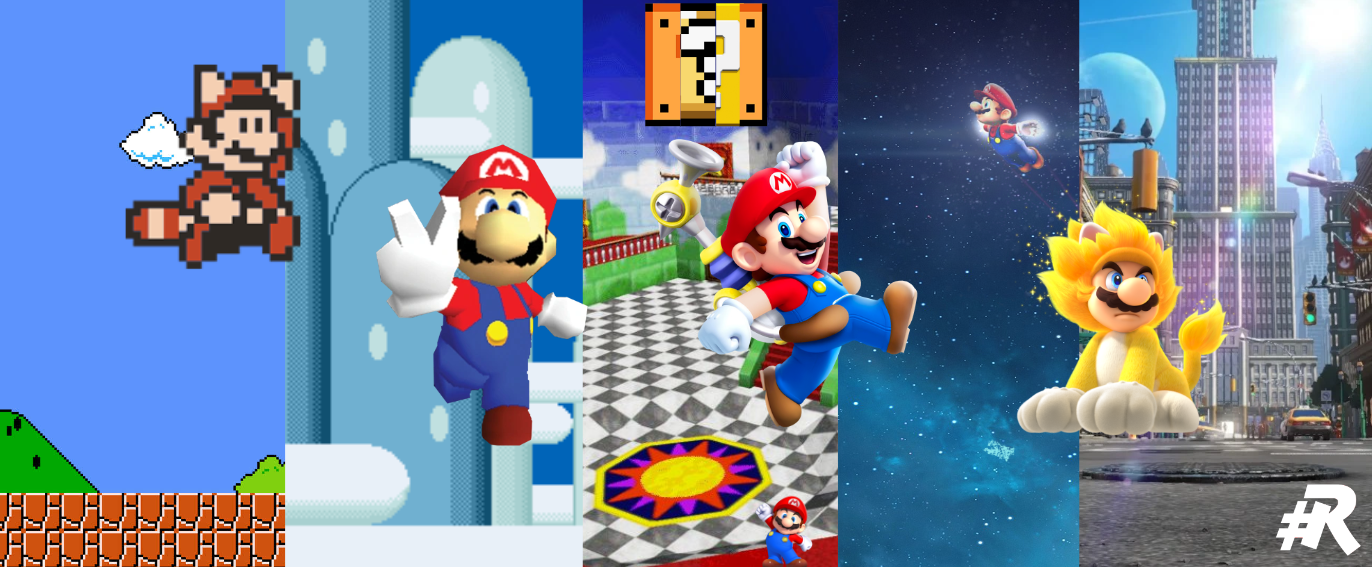This is the day that would change me forever. In 2015, my dad bought me a Wii U with Super Mario Maker, which I had previously been playing at Best Buy for weeks. However, he didn’t just get me any Wii U. I got the deluxe version, which came with pre-downloaded, digital copies of Nintendo Land and Super Mario 3D World. Even though I specifically wanted a Wii U for Mario Maker, I would end up enjoying 3D World more. It was the first Mario game I had ever played, aside from the original NES game that my parents showed me. This was the first game I really played. Since then, I’ve played every mainline Mario platformer, from the 8-bit sidescrollers to the Italian plumber’s latest open-world adventures. So, finally, it’s time for me to rank every single one. Before we begin, I would like to make a few quick notes. First, I have completed all of these games, but I’ve definitely dabbled with certain games more than others, so I might talk about them more than the others. Also, my ranking isn’t completely centered around nostalgia, however it does play a small part. Finally, this list will only include the mainline platformers. This won’t include remakes, such as Super Mario All-Stars or Super Mario 64 DS, as well as any Mario spinoff series, such as Mario Kart, Mario Party, Mario Sports, et cetera. With that being said, let’s-a-begin.

#19
“Super Mario Bros.” (1985)
Ryan Meter: 4.0/6
It’s the game that saved the home console industry in the 80s and revolutionized what is now the most popular video game character in the world – but that doesn’t mean the game has aged very well. The original Super Mario Bros. includes 32 levels through eight worlds. Unfortunately, there just isn’t much to this game, especially with what games have preceded it. The controls are hard to get used to, since Mario is very slippery and it’s hard for Mario to get momentum when he jumps. Most of the time a jump is a pretty short distance. Some of the levels are also very odd, and some are downright stupid. The game can still be fun, but compared to what came next it’s very sub-par.

#18
“New Super Mario Bros. U” (2012)
Ryan Meter: 4.2/6
Nothing, even the ‘U’ added to the title, makes the Wii U’s New Super Mario Bros. game any different than the past three titles. In fact, this game is arguably the most bland, uninspiring, and boring game in the sub-series, as well as one of the most boring 2D platformers I’ve ever played. Mario’s new power-up, the Super Acorn, is fun to use; it turns Mario into a squirrel, letting him glide across levels and boost upwards for some quick extra height to reach higher areas. It’s fun to use, but there isn’t anything else here. The bosses are the same, the world maps are pretty much the same as New Super Mario Bros. Wii, the themes are the same, and everything else is the same. Nothing new.
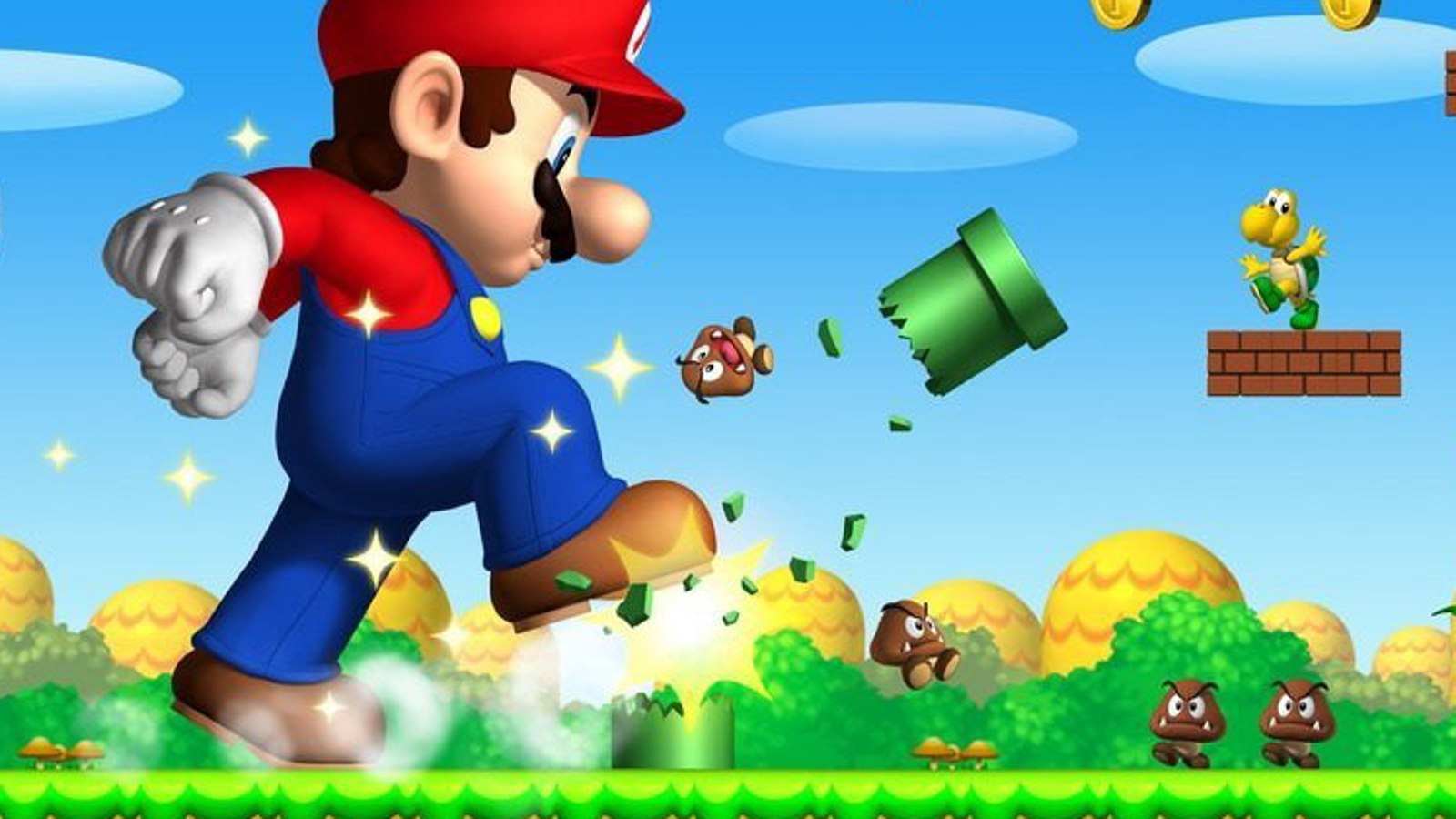
#17
“New Super Mario Bros.” (2006)
Ryan Meter: 4.3/6
It had been over a decade since the last time a new Mario game had the plumber running left to right in levels. New Super Mario Bros. tried to be a new 2D game based on its NES/SNES predecessors, adding new features and elements to liven up the side-scrolling Mario series — though what it actually did was spiral into a long and uninspiring sub-series in the Super Mario series that would last for more than 3 generations just because the game flew off store shelves. However, it’s not all bad. Most of the levels are fun and interesting, and the world map connects the ideas of Super Mario Bros. 3 and Super Mario World together. Each world map is laid out in split paths letting players choose which direction they want to follow to reach Bowser’s castle, with minigame shops all over. Each Toad House awards players either power-ups or 1-Ups depending on the color of the house. So, while the game is a fun adventure, it isn’t very unique. Most levels are fun, like I said, though they aren’t creative and have bland, reused concepts. I also found the game to be a bit more difficult than expected, though that might just be me not playing well. However, I did find some really stupid areas in a lot of levels. Also, the power-ups selection is terrible. Next to the usual mushroom, fire flower, and invincible star, the only new inclusions are the blue shell and mini mushroom. The blue shell is kind of fun, but hard to control in some levels. The mini mushroom on the other hand is terrible, not giving Mario another hit point, making jumps very floaty, and is only used to go through small pipes. It’s not even a power-up – it’s like a de-power-up. Overall, these and the few other new things are pretty uninteresting and make New Super Mario Bros. a pretty mediocre platformer. On the other hand, I do love the unique bosses in each world, unlike the Koopalings in the next few games. Mario will encounter a large, mummified Pokey, a giant Goomba, a large Lakitu that attacks with lightning, and even Petey Piranha. The final Bowser battle is just the same as the original Super Mario Bros., which sucks, but the rest of the bosses are cool to take on. New Super Mario Bros. is probably the most unique in the entire series, but that isn’t really saying much.

#16
“Super Mario Land” (1989)
Ryan Meter: 4.3/6
Mario’s first adventure on a handheld console came with Super Mario Land on the Game Boy, and it’s a unique Mario experience. The game was developed by a different team at Nintendo, so instead of traveling the Mushroom Kingdom to save Peach from Bowser, Mario instead explores the world of Sarasa Land to save Princess Daisy from the evil Tatanga. Mario also has a new power-up: the Superball Flower. This lets Mario fire a superball, which bounces all around the stage, just like from the classic game of Breakout. This adds an element of strategy on how to snipe flying enemies, while also being easy to snipe creatures close by, though precision otherwise isn’t great. The controls are the major issue with the game. Mario doesn’t build any momentum when running or jumping, and when he falls he’s like an anvil sinking to the ground. It’s very difficult to get used to, making seemingly easy jumps hard to complete. Super Mario Land only consists of twelve levels, which is incredibly small, even for a Game Boy game. It takes only about 45 minutes at most to beat the entire game. The levels are all fairly fun, though I definitely found the most fun with the shooter levels where Mario rides a spaceship that can fire projectiles at enemies and bricks. These are fun levels, and even are used in the game’s final level. Overall, Super Mario Land is a fun and unique experience that anyone should play, but it’s not long enough to be memorable and its strange controls are a chore to get used to.
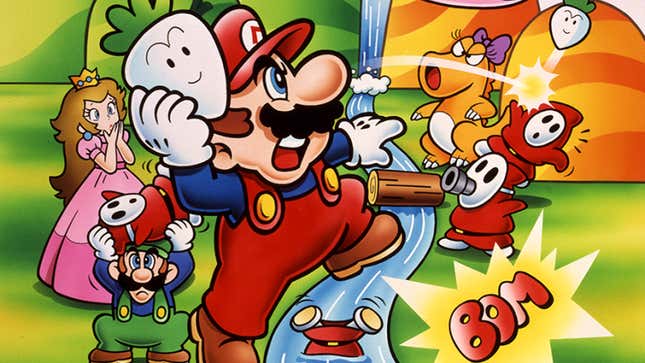
#15
“Super Mario Bros. 2” (1988)
Ryan Meter: 4.5/6
Nintendo thought the actual Super Mario Bros. 2 was too hard for us American gamers, so instead we got a rebrand of a Japanese-only game called Doki-Doki Panic with Mario and friends. However, this game is so much better than the Japanese Super Mario Bros. 2. In the American Super Mario Bros. 2, also known as Super Mario USA, Mario and friends must travel through a world called Subcon Mario saw in his dream to stop the evil Wart. Instead of the usual jumping on enemies and breaking bricks, Mario can now pluck up plants to throw at enemies. You can also pluck up potions, which create a door that takes Mario to an opposite dimension temporarily. In this dimension, Mario can find a mushroom and coins. Coins can be used in the bonus game at the end of each level for extra lives. The gameplay mechanic of picking up objects from the ground is fun and very unique, unlike anything else ever seen in a Mario game since. This makes for a creative and different Mario experience. However, not everything about the game is perfect. While not as hard as the Japanese sequel, the American Super Mario Bros. 2 is still very challenging, especially in the later worlds. On top of that, it’s very hard to get 1-ups. Coins are only found in these dimensions, and getting a match in the bonus game is not easy to do, and this is the only way to get 1-Ups aside from the very few 1-Up mushrooms found in the game. Also, some levels are pretty lazily made. Some you’ll just slowly fly on a magic carpet with very few enemies to look out for, and others are very short and simple. However, as a whole, Super Mario Bros. 2 is very well made, and this is definitely a game that any Mario fan should try at some point because of its creativity and uniqueness compared to other games in the series.

#14
“Super Mario 3D Land” (2011)
Ryan Meter: 4.5/6
I’m gonna be honest, this game was pretty fun the first time I played it. However, it doesn’t get much better as you continue. Super Mario 3D Land is 3D, but it’s played like a 2D game. You’ll go from level to level, world to world to reach Bowser and rescue Peach – the usual 2D gameplay. Every level is bite-sized and compacted, each with their own idea or concept. Unfortunately, this makes none of them to be very memorable. There’s only a handful of levels I remember from 3D Land. Every level also includes three star coins, known as star medals here, to find. Most of them aren’t very well hidden and some are just out in the open. The difficulty of the game doesn’t progress like a typical video game, either. Some levels are much harder than others, and the last couple of worlds will put your skills to the test. Once you beat Bowser, you’ll unlock special worlds. These special worlds aren’t very fun, since the levels are pretty much just harder versions of the levels in the normal worlds. Once you 100% all sixteen worlds, you’ll unlock the final challenge: Crown-Crown, which I actually found to be quite underwhelming. There were levels in these special worlds that I’d argue were harder than Crown-Crown, but otherwise it’s a fun challenge. Overall, 3D Land has some fun stages, but its drab and simple worlds and forgettable concepts make it a pretty low-tier Mario experience.
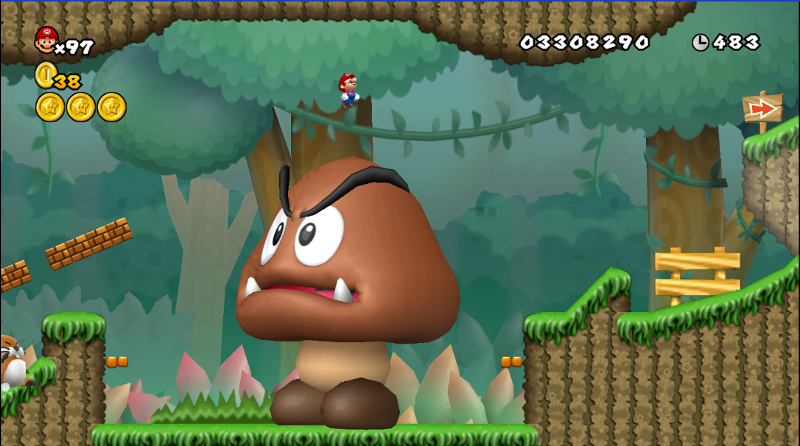
#13
“New Super Mario Bros. Wii” (2009)
Ryan Meter: 4.6/6
Surprisingly, New Super Mario Bros. Wii actually has some pretty fun levels and the multiplayer was not only innovative but also fun to play with friends and family. I remember playing this game with my cousins when I was younger, and man was that a fun time. However, in the grand scheme of things, the Wii’s ‘new’ 2D Mario adventure is no different or unique than the original game. The world maps and themes are very similar, and the Koopaling fights are a huge downgrade to the bosses of the DS game’s boss battles. While the blue shell unfortunately got booted, Mario can now power up with the Propeller Mushroom, letting Mario propel through the air across levels. The ability is super broken, but sometimes overpowered elements in games are fun in some aspects. Then there’s the multiplayer, which unlike New Super Mario Bros and its Mario vs Luigi mode, now up to four players can play together in levels. While this is very fun, it’s also very hectic and sometimes annoying with all the jumping off of people’s heads and players picking up other players. New Super Mario Bros. Wii is just dumb fun, but sometimes that’s all you need to enjoy a game.

#12
“Bowser’s Fury” (2021)
Ryan Meter: 4.8/6
Bowser’s Fury is currently the closest we have to open-world Mario, and it’s pretty fun to play. In the side game to Super Mario 3D World’s Switch port, Mario teams up with Bowser Jr. to stop Bowser who has turned into Fury Bowser. Fury Bowser is huge and covered in poisonous black goo. While Mario travels to the different islands of Lake Lapcat to find enough Cat Shines, Fury Bowser will occasionally spawn in, attacking Mario with fire and large projectiles. It’s a pretty unique gameplay twist, making the fairly easy levels a bit more difficult. Unfortunately, the islands in Lake Lapcat are very small compared to a typical 3D World level, while some are pretty much just a battlefield where you’ll fight a boss. The game is very small and easy to complete because of this, but exploring the world is very fun. While you do unlock more islands as the game progresses, you can go wherever you want in the unlocked area. There are several cat shines in every level, which are this game’s main collectible. While a lot of them repeat, a lot of them are also interesting and unique. Once you collect enough cat shines, you’ll be able to use a Giga Bell, making Mario as big as Fury Bowser. These fights are fun since you can do a couple of different things to attack Bowser, but every encounter is very easy. Even the final fight is very easy, as you’ll ride Plessie across dash panels chasing Bowser. The game is very easy and many of the levels are small and simple, but overall the game is still very fun, creating a blueprint for many 3D Mario games to build onto.
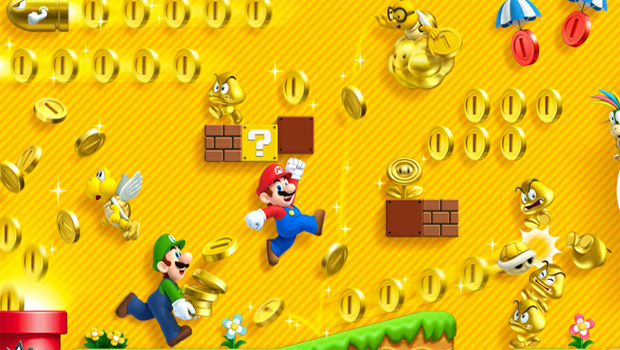
#11
“New Super Mario Bros. 2” (2012)
Ryan Meter: 4.8/6
The only reason New Super Mario Bros. 2 is the highest of the New Super Mario Bros. games is that the game at least attempts to be interesting, while also having slightly better level design than other games in the sub-series. Despite that, it’s very much the same as the others. The 3DS version is centered around collecting lots of coins. Unfortunately, it’s a very basic idea, and hundreds and hundreds of coins in each level make the game stupid easy because of all the 1-Ups you can get. Seriously, I had more than 50 lives after world 2. However, collecting coins has always been a satisfying aspect of Mario games, so collecting tons more is sort of fun. Plus, using the Gold Flower is super fun, letting Mario turn enemies and blocks into coins. It’s just stupid fun, and sometimes that’s fine. While the propeller mushroom isn’t here, Nintendo did bring back the Super Leaf from Super Mario Bros. 3, and it works pretty much the same way, letting Mario fly temporarily by running enough to reach his maximum P-Speed. However, these (and that fact the Nintendo just made some enemies gold or skeletons) are the only differences about New Super Mario Bros. 2. The game is merely a clone, just like the other New titles. Although, I did find the bite-sized levels to be very fun and enjoyable, though eight worlds would have been nice. While it is slightly more interesting than other games in the series, it’s still a pretty bland 2D platformer as a whole, with cheap boss fights (as well as the same boss in every mid-castle), the same music and themes, and more of the same. Nostalgic elements can only get you so far in a video game.
#10
“Super Mario Land 2: 6 Golden Coins” (1992)
Ryan Meter: 4.9/6
I’ve already mentioned Super Mario Land with its strange controls and weird new elements. Its sequel, however, did not follow the game’s footsteps. In Super Mario Land 2, Mario now is fighting for his castle instead of a princess. Wario has taken Mario’s castle, and Mario needs the six golden coins found around Mario Land to take back his castle. Instead of being a linear experience, the player can travel to pretty much any world anytime (with a few exceptions). This makes Super Mario Land 2 a more unique experience than other 2D games. The worlds all have their own theme with their own enemies and objects. Each world is detailed and looks very different and unique from each other, even for a game made up of just a few colors. Mario’s sprite now resembles his Super Mario World design, and some concepts from that game were carried over. Everything that was wrong with Super Mario Land was fixed in Super Mario Land 2, and it makes for a very fun platformer. The only real problem is that since the worlds aren’t in order, the levels don’t get progressively more difficult. Otherwise, Super Mario Land 2 is an underrated 2D Mario gem that every Mario fan should play at some point.

#9
“Super Mario World” (1991)
Ryan Meter: 5.0/6
A lot of people are probably going to disagree with me here. Some people call this the best 2D Mario game, some call it the best Mario game, and some people call it the best platformer of all time. I am in none of those categories, but I still thought Super Mario World was an excellent Mario game. Mario’s first 16-bit adventure is full of charm, beautiful worlds, spectacular level design, and fun new ideas. Every new asset is unique and fun to use, and every new enemy is fun to take on. The new controls are helpful and make for creative puzzles, and new ideas introduced have inspired almost every Mario game since, like checkpoints, bonus worlds, and secret exits. However, Mario’s first dive into 16-bit isn’t perfect, especially in comparison to its predecessor, Super Mario Bros. 3. The world map is merely a way to get from level to level, without any other places of interest such as toad houses or minigames rooms, which to me makes traversal a bit dry. And while it is a joy to soar through the air as Cape Mario, that’s pretty much it for power-ups. The only other new ability is the weak P-Balloon, which is temporary and rarely shows up. No other previous Mario power-up is here aside from the usual mushroom, fire flower, and invincibility star. Also, I wasn’t a huge fan of the controls. Mario feels very slippery, and it’s hard to keep momentum when you jump. All of these made my experience with Super Mario World a bit less fun than Super Mario Bros. 3, but the same can’t be said for the levels, which are arguably more well-designed than its 8-bit precursor. The secrets are more creative, there are so many hidden details in every level, and of course, the secret exits are very fun to find. It’s also super cool how the world is designed with these in mind, where the map’s structure can give hints on which levels might connect to a secret path somewhere. This is super creative, and is still in 2D Mario today with the likes of the New Super Mario Bros. games and more recently Super Mario Bros. Wonder. While I wish there was a bit more to the game as well as its controls, Super Mario World is otherwise a masterpiece filled with unique ideas and creative levels from Yoshi’s Island 1 to The Valley of Bowser.
/cdn.vox-cdn.com/assets/1969959/super_mario_64.jpg)
#8
“Super Mario 64” (1996)
Ryan Meter: 5.0/6
There’s no replacing Super Mario 64. It’s the original 3D platformer that changed everything. Now with 64-bit graphics, Mario can explore in completely 3D environments, and each level takes this into account. Every level in Super Mario 64 is large and expansive, unlike the more linear levels of the 2D series. Instead of running through each level to the flagpole, Mario now can collect Super Stars in each level by completing a unique objective. The game even gives you hints as to where to find each Super Star or how to access it, but you can go for any star, unlike future 3D games. Super Mario 64 is surprisingly in-depth and open-world for its time. It’s very unique to go back to. And connecting all the magic together is Peach’s Castle, an incredibly fun and extensive hub area. Mario can go through painting in the castle to access levels, or even find hidden areas in and outside to collect more Super Stars. Super Stars are what progress you through the game, where you’ll fight Bowser multiple times before he’s done for good. These fights are so simple yet so engaging, as Mario will have to run around Bowser, grab onto his tail, spin him around like crazy, and throw him into one of the bombs surrounding the battlefield. What makes Super Mario 64 different is that because of its legacy and originality, every detail seen as either weird or out of place just adds to the charm. Whether it be one of the strange glitches, such as the famous BLJ, or the odd design of levels, it all just makes Super Mario 64 a special and legendary game. Super Mario 64 is a game that has aged fairly well for being the first 3D Mario game, as well as being almost 30 years old. Playing this game is always a unique and fun experience, filled with interesting elements and innovative ideas that would change the Mario series forever. It’s so incredible that we hadn’t seen a game like it until Super Mario Odyssey. It was legendary back then, it’s legendary now, and it’s a damn great game.
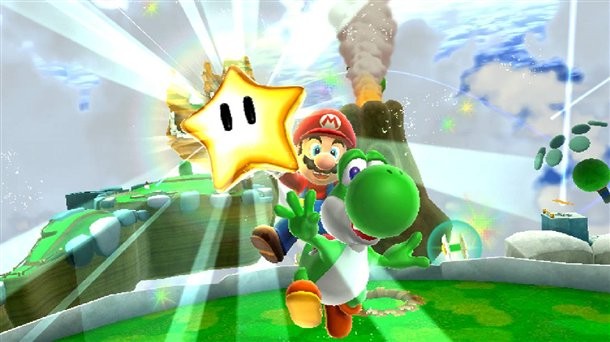
#7
“Super Mario Galaxy 2” (2010)
Ryan Meter: 5.1/6
Super Mario Galaxy was a work of art, filled with creative levels, a beautiful story, and amazing music. Super Mario Galaxy 2 had the hard task of exceeding that, and while I personally don’t think it is better than the original, I still think it’s a fantastic video game that comes very close. Somehow, Nintendo was able to find a way to make the levels even more creative with even more unique concepts. A lot of this comes from the new items Mario can use. Next to the Bee, Boo, and Spring Mushroom from the previous game, along with other Mario standards, Super Galaxy 2 adds its own lineup of new abilities. The Cloud Flower is easily the best, giving Mario floatier jumps and letting him spawn three cloud platformers each time he picks up a flower. The ability is used brilliantly throughout the game, such as letting Mario spawn clouds in the breeze so they can float as a moving platform. While it can be a bit broken in some instances, it’s still an incredible power-up. Next is the Spin Drill, which lets Mario drill through dirt in certain levels. The ability is only used in specific instances, but is still unique and makes for some creative and interesting puzzles in levels. There’s also the Rock Mushroom, which allows Mario to roll right into objects to either break them or knock them over. You can even use it like a bowling ball in some parts, which were fun to play. You can also ride on Yoshi in many levels, and he can now consume berries that give him temporary abilities, like dashing really fast, hovering high into the air, and even lighting up part of the level. It’s all very fun to play with, and all a neat way of incorporating the fan-favorite dinosaur. The main difference between both Galaxy games is the hub world. Instead of the large Comet Observatory, Mario now travels on a small planet that acts as a spaceship and looks like Mario’s head. While silly, it’s still fun to explore, but it just doesn’t have a lot compared to the Comet Observatory. The game is also structured as a world map, rather than the domes in Super Mario Galaxy. Overall, the gameplay is very similar, though I did find the first game to be a bit more natural. Both games are fantastic, but I do believe that the original is untouchable. Saying that however, Super Mario Galaxy 2 is still an incredible video game.
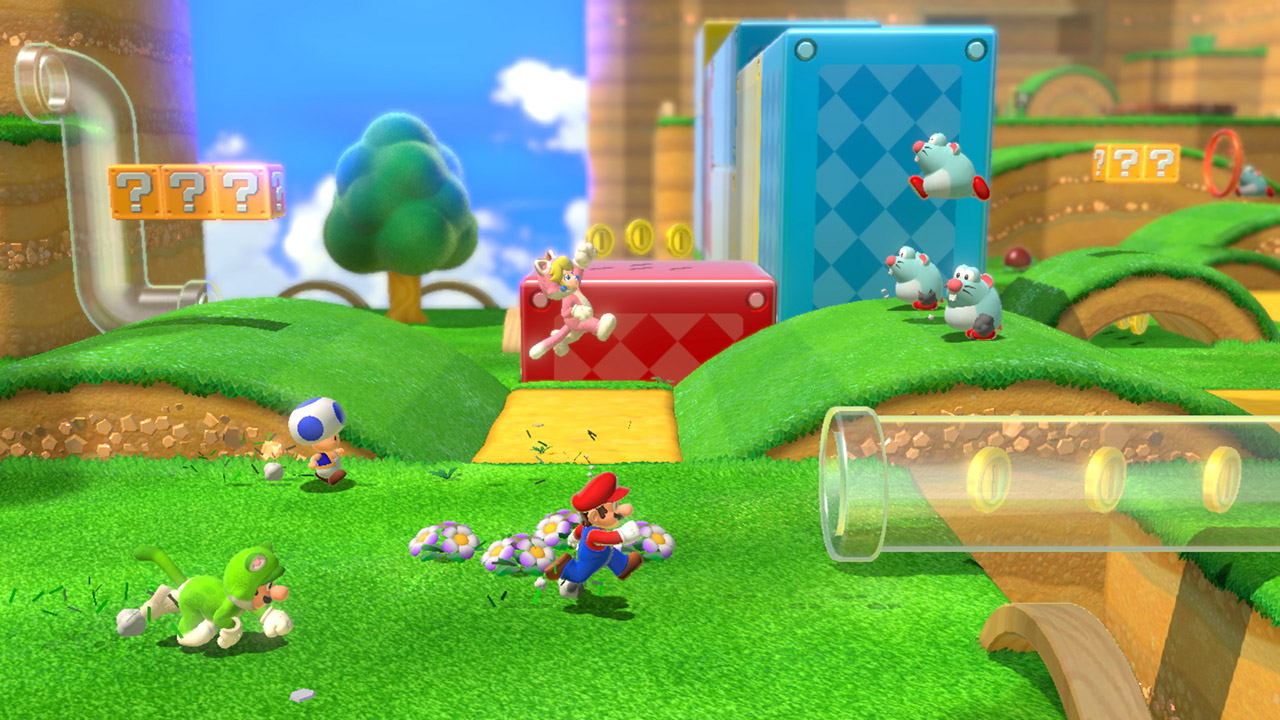
#6
“Super Mario 3D World” (2013)
Ryan Meter: 5.4/6
This is the first Mario game that I played that made me into a true Mario fan. While most people might think I’m crazy for putting this game where it is, I absolutely adore this game. Super Mario 3D World is designed as a successor to Super Mario 3D Land, and it excels in all of that game’s drawbacks. The world map is fully 3D and expansive, the levels are all creative, unique, and fun, and the controls are much better. Super Mario 3D World is an incredibly exciting adventure for the entire family, and everything about the game works. The game has one of the best lineups for power-ups, with the normal Super Mushroom, Fire Flower, and Super Star, along with 3D Land’s Tanooki Leaf and Boomerang Flower, along with new abilities including the Super Bell, Lucky Bell, Double Cherry, Cannon Box, and even a Goomba Skate. Super Mario 3D World has so many neat new power-ups that make for an incredible gaming experience. Playing with friends is also a lot of fun, since it is a bit easier to make your way around since you aren’t enclosed in a 2D space like the New Super Mario games. The game even gives each player’s score, giving a crown to the player with the highest score. Once you finish Super Mario 3D World, you’ll face Bowser in what is personally my favorite level in Mario history. The Great Tower of Bowser Land proves you don’t need to actually fight Bowser to make for a great Bowser battle. Mario climbs two towers as Bowser, now Meowser, claws at you and attacks from sliding down. Once you reach the second tower, he uses a Double Cherry to make multiple clones of himself, making for a creative and climactic way to end the game. I also prefer the bonus worlds in 3D World to 3D Land, as just playing harder versions of every level in eight more worlds was a bit tedious. 3D World has four bonus worlds, with World Crown being unlocked only when the player has collected every green star, stamp, and touched the golden top of every level’s flagpole. Champion’s Road is undoubtedly one of the hardest levels in Super Mario history, but it’s still lots of fun. However, you don’t need to unlock this to enjoy the game. Super Mario 3D World might not be as epic and enticing as other games, but it sure makes for one hell of a great time.

#5
“Super Mario Sunshine” (2002)
Ryan Meter: 5.4/6
This game is quite possibly the most controversial game in the Mario series. I feel like you either love it or you hate it, and there’s no in between. I’m in the category of fans that love this game, but that doesn’t mean there aren’t clear issues. Anyway, Sunshine is one of the more unique Mario titles. There is no ice world or desert world or any of that. Sunshine is set on the island of Isle Delfino, and every level in the game is beach or vacation themed. This includes beaches, a boardwalk amusement park, a hotel, a harbor, and more. Connecting these areas together is none other than Delfino Plaza, which is downright the best hub world in Mario. It is so fun to jump across the buildings, dive across the canal that swims through the town, or just move through the sewers. Delfino Plaza is filled with stuff to do, usually rewarding in the player getting a Shine Sprite. Every level is unique and interesting, and it feels like it’s all on one island. You can even see levels from other levels, like Ricco Harbor below the back of Bianco Hills. It’s incredible. Saying that however, there are some major flaws. The controls are just okay – they feel very janky and hard to precisely navigate with. FLUDD works fine, and I enjoyed using him throughout the game, but other things make platforming a bit difficult. Also, some shines are very difficult, and you need to complete the first seven missions in every level to unlock the final area. I dislike this a lot, as you should be able to skip a few hard shines and still advance. This also makes hidden shines and Delfino Plaza shines pretty unimportant. Otherwise, this game is beautiful, with great level design, fun challenges, unique boss fights, and that tropical setting on top of it. It’s spectacular.
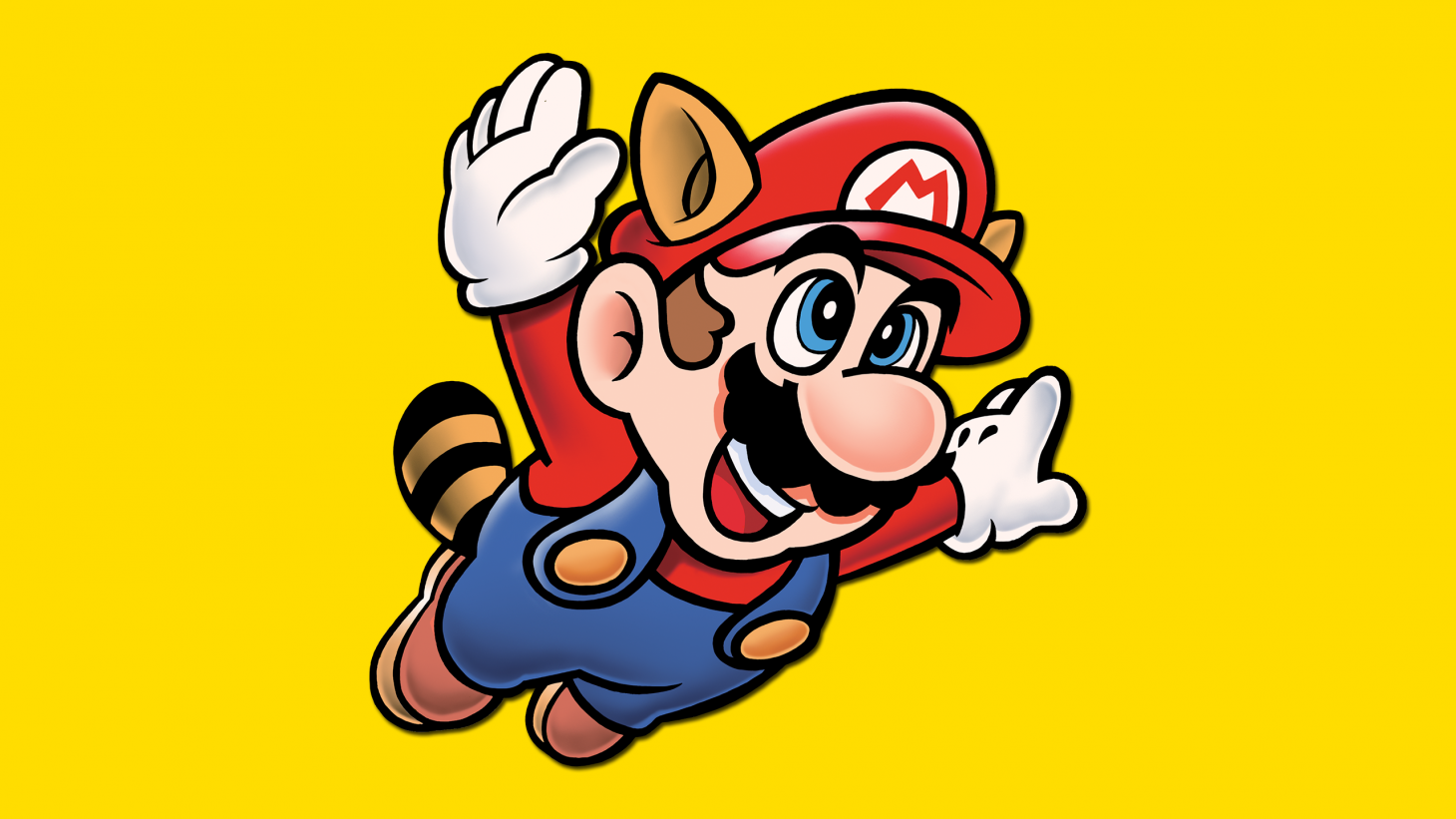
#4
“Super Mario Bros. 3” (1990)
Ryan Meter: 5.5/6
This is undoubtedly one of the most celebrated and beloved Mario titles of all time. Super Mario Bros. 3 defined what Mario could be in a larger sense, introducing so many new features that are today seen as key parts of the games that wouldn’t be the same without them. From the simple, level-by-level gameplay of Super Mario Bros., the red plumber’s third adventure to save Princess Peach includes one of the most influential aspects of 2D Mario today: a world map. Instead of finishing a level and going right to the next, Mario now could move around eight different maps, which also included other points of interest such as Toad Houses and minigame shops. These made 2D platforming so much easier, letting players stock up on 1-Ups and extra power-ups so they would be prepared for the challenging levels in the later worlds. Speaking of levels, every level is designed perfectly. Each level has a unique concept that also connects to the theme of the world. Plus, each level is filled with secrets, whether it be hidden areas in the sky or secret pipes and items around the stages. Super Mario Bros. 3 proved that levels could be super fun to explore, just to see what kind of secrets you could find. Mario also has a bevy of incredible and iconic power-ups: the Super Leaf, Tanooki Suit, Frog Suit, Hammer Suit. This is undoubtedly the best power-up lineup of any 2D Mario game. From the brilliant level design, influential new concepts, and tons of great new abilities, it’s clear why the apex of Super Mario is still seen as one of the best games in the entire series, and one of the best 2D platformers ever made.
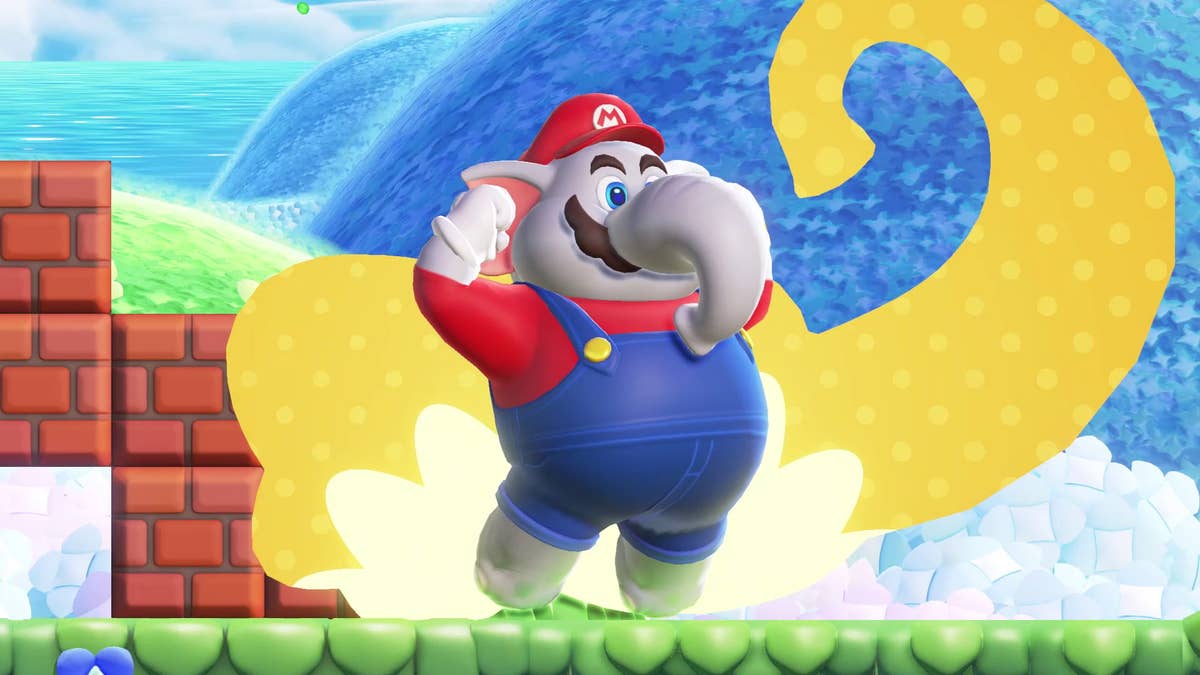
#3
“Super Mario Bros. Wonder” (2023)
Ryan Meter: 5.7/6
Solely because New Super Mario Bros. sold like hotcakes, it has been over 20 years since the last 2D Mario game that didn’t have ‘New’ in the title. Finally, 2D Mario would be back to its original, creative roots. However, Super Mario Bros. Wonder proved to be so much more than that. In Wonder, Mario must travel across six large worlds, collecting enough Wonder Seeds in levels to reach the world’s Royal Seed. Each Royal Seed removes a Cloud Piranha from Bowser’s gigantic castle, which unlocks the final fight. Every level has at least two Wonder Seeds: one for completing the level, and one only unlocked by triggering the Wonder Flower. A Wonder Flower changes the level in a crazy and strange way. Mario might be jumping across pipes bending like inchworms, running as a goomba, rolling through blocks as a giant spiky ball, or even walking across the wall in a 3D, top-down area. The level changes into a very wacky creation, making levels even more fun. The levels themselves are wonderfully (no pun intended) designed, including unique enemies, concepts, and tons of secrets, which we haven’t seen in a 2D Mario level since Super Mario World. Super Mario Bros. Wonder isn’t just a breath of fresh air, it’s a breath of new and unique air. Super Mario Bros. Wonder builds on not just the New Super Mario Bros. games, but also everything that came before it, creating a truly strange, enjoyable, and special experience. Every character is filled with personality, and the worlds brim with life more than any other in Mario history. Super Mario Bros. Wonder is just a charming and happy video game that can make anyone smile. My only gripe with the game is that the bosses are very mediocre, with each being an easy Bowser Jr. battle. Even the final boss is pretty underwhelming. However, that’s just a small price to pay for a game that is one of the best 2D platformers I’ve ever played, and one of Mario’s most exciting adventures.
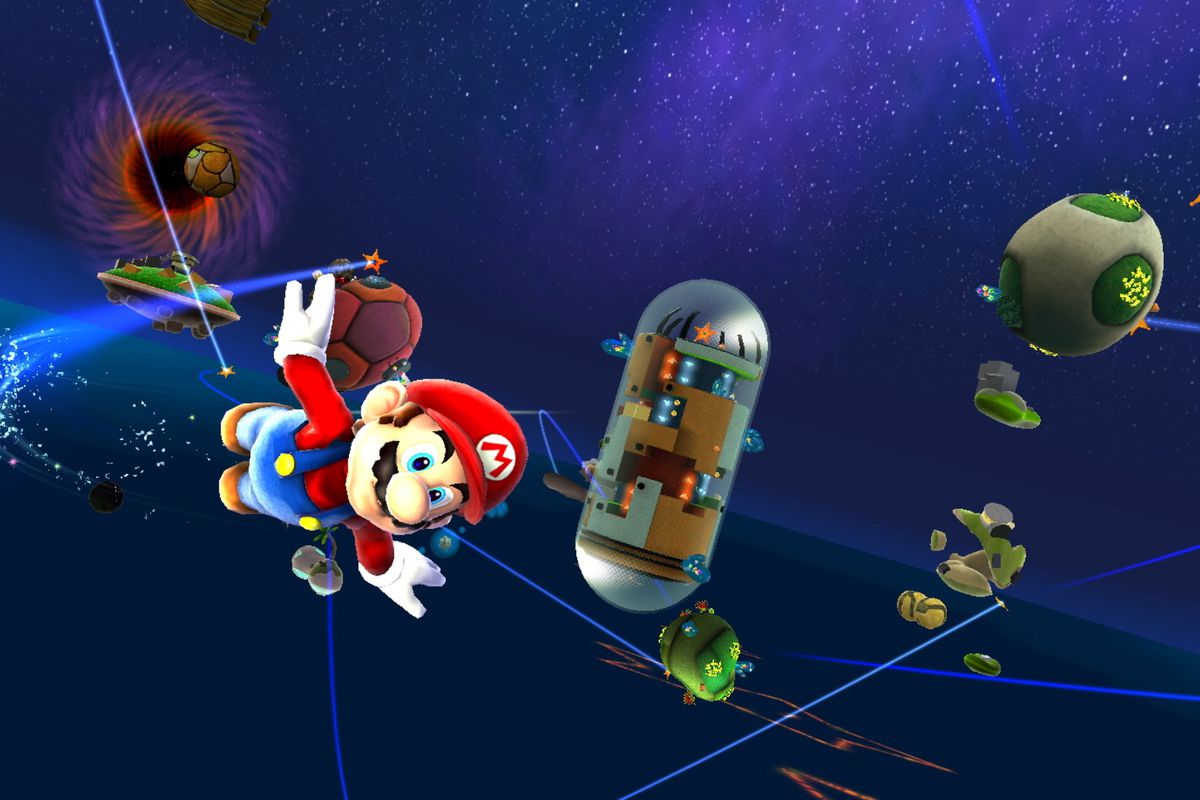
#2
“Super Mario Galaxy” (2007)
Ryan Meter: 5.8/6
There’s no game quite as magical as Super Mario Galaxy. Mario travels across tons of different, unique galaxies each with creative concepts and ideas, on the mission to collect Green Stars and save Peach from the clutches of Bowser, who wants to create a reactor that can give him complete control over the entire universe. Super Mario Galaxy is one of the most well-designed Mario games ever made. Every galaxy is creative in a different way, and each mission is fun to play. Connecting every dome together is the incredible Comet Observatory, the home of the Lumas. One Luma gives Mario a new power: the spin jump, which Mario can use to attack enemies up close, attack objects, and it gives him a boost while in air. Every galaxy is connected by planets, and Mario is able to walk all across the planets without the limit of gravity. This makes levels even more creative, with every concept taking advantage of the new controls and new power-ups. The power-up lineup is also incredible, reaching the heights of Super Mario Bros. 3 for me. The Bee Mushroom lets Mario temporarily fly and climb on honeycombs; the Ice Flower lets Mario freeze enemies and skate on water, and the Boo Mushroom turns Mario into a ghost, letting him levitate and go through walls. Other power-ups like the Spring Mushroom and Red Star are finicky to control and aren’t very fun to use, and returning power-ups like the Fire and Ice Flower are a temporary use. That’s really my only criticism of the game. Super Mario Galaxy is epic, spectacular, and incredible, with an incredible orchestrated soundtrack as the cherry on top. Super Mario Galaxy is amazing from the first galaxy to the final Bowser fight, with so many exciting levels for Mario to explore and so much charm that can’t be overlooked.

#1
“Super Mario Odyssey” (2017)
Ryan Meter: 5.9/6
Super Mario 3D World turned me into a true Mario fan, but it was Super Mario Odyssey that turned me into a superfan. Super Mario Odyssey takes players on an incredible journey across the world, where Mario will have to explore multiple kingdoms before reaching Bowser to stop him from marrying Peach. Each world is beautiful and highly detailed – from the glorious waterfalls of Cascade Kingdom, to the grand skyscrapers lining the streets of Metro Kingdom, to the glowing sea of Seaside Kingdom. Super Mario Odyssey is the true successor to Super Mario 64, with huge, open worlds filled with things to do. Super Mario Odyssey is a masterpiece, including fun challenges, charming settings, intense boss battles, and so much more. Mario’s new ability in his globe-trotting adventure comes by a hat-shaped spirit called Cappy, who Mario can use as an extra platform to jump on or to capture enemies. While it seems simple, Cappy works perfectly across the game, giving Mario room to make precise jumps to climb the desert ruins, iron towers, and salt-piled structures he’ll encounter on his journey. Captures are a unique new aspect of the game, letting Mario take over different enemies and objects to help him with certain tasks. While not all of the captures are very memorable and useful, a large handful of them are and are found multiple times across the game. Once you get to the postgame, the game starts to take away the magic players experienced when they first explored each kingdom. To complete the postgame, players will have to search every nook and cranny of every nook and cranny of every kingdom to find all 880 moons and 1,000 purple coins. While I did find the postgame to be fun, it does make exploring each kingdom feel less magical every time I replay them. Otherwise, Super Mario Odyssey is perfect, and definitely what 3D Mario should build on going forward.
What’s your favorite Super Mario game? Let me know in the comments.
Our Twitter: @RyansFortress


